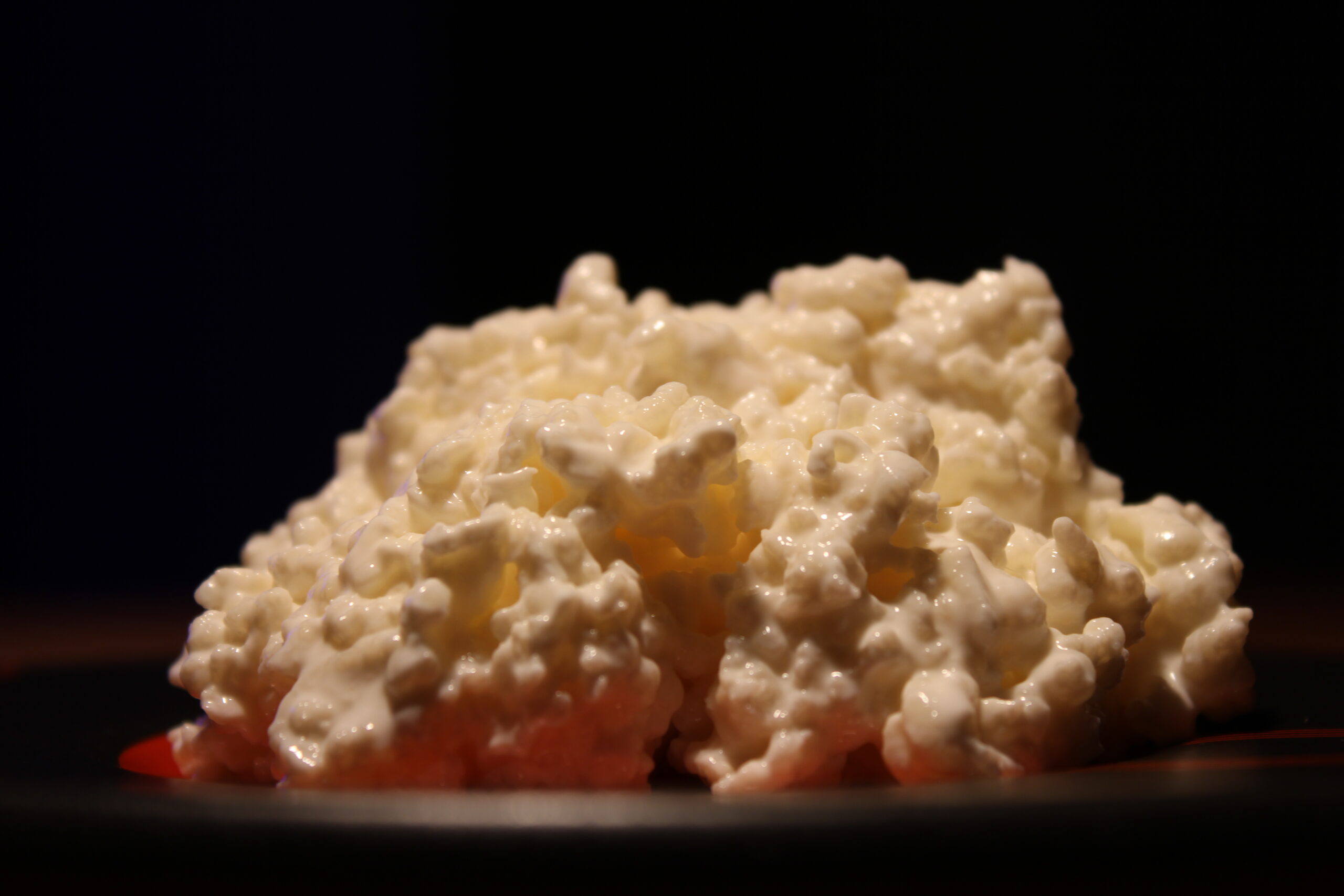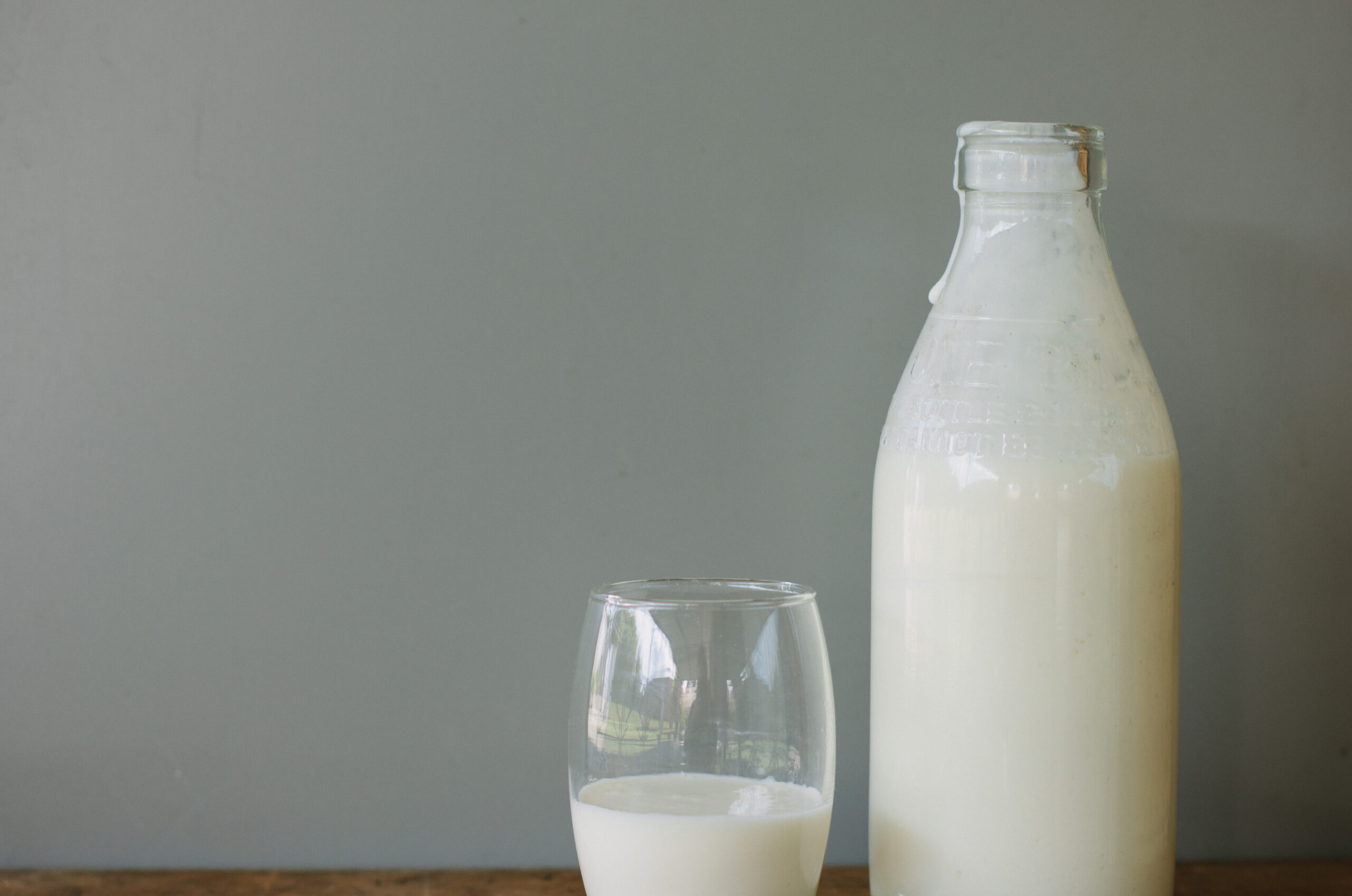

Milk Kefir
Original price was: 14.99$.9.99$Current price is: 9.99$.
1 x fiole / pack
Fresh Kefir Grains
Milk kefir is a fermented beverage native to the Caucasus regions. It is made from cow’s, goat’s or sheep’s milk, to which kefir grains, a mixture of bacteria and yeast, are added. Kefir grains convert lactose in milk into lactic acid, which gives kefir its characteristic tangy taste.
Milk kefir is recognized for its many health benefits. It is rich in probiotics, these good bacteria which promote the proper functioning of our digestive system and strengthen our immune system. In addition, kefir also contains vitamins (B2, B12, K), minerals (calcium, magnesium) and essential amino acids.
Its texture is slightly thick and creamy, making it both refreshing and nourishing. The taste of milk kefir is slightly tart and can vary depending on the fermentation time and the ingredients used. Some describe it as a liquid yogurt, while others compare it to a sparkling drink.
Milk kefir can be consumed as is, but it is also often used in the preparation of smoothies, sauces and desserts. It is a healthy and delicious alternative to traditional dairy products, suitable for people with lactose intolerance.
In summary, milk kefir is a nutritious fermented beverage, rich in probiotics and beneficial for our digestive and immune health. Its creamy texture and tangy taste make it a popular drink among many lovers of fermented dairy products.
How should I start the procedure?
Immediately drop the milk kefir grains into 1 cup of fresh milk. The grains will be inactive due to the stress of transportation. It will take about 4-5 milk changes over a 20 hour period for them to recover. Use 1 of pasteurized milk for the first week. Place the milk and grains in a glass container and stir. Cover the container to prevent contamination and place it in a warm place (68-78F). Gently shake the glass container every few hours to move the fresh milk toward the grains. When you notice the milk separating into whey and curds (this may not happen for the first few batches), shake again to mix the whey and curds until you have a smooth liquid. You can strain the beans BEFORE separating to get a smoother, less bitter flavor. You can also remove the grains earlier and let the milk kefir ferment further.
The grains feed on the lactose/sugar found in milk. Take the glass container, stir it and pour the contents into a strainer. Remove the grains from the strainer, add another cup of fresh milk, then gently stir the grains with a spoon. Cover with a breathable or non-breathable lid. Now that you’re making your second batch, goat’s milk works great!! The grains should develop during the second week. If you use a tight-fitting lid, the milk will become carbonated. You can slow down the activity of milk kefir grains by placing them in the refrigerator or freezer. Use only stainless steel as metal. For best results, we recommend using nylon/plastic strainers and glass containers.
If you are using raw milk, you can mix 50/50 with pasteurized milk for the first week, then switch to 100% raw milk. The second batch could be well developed. However, your kefir will be perfected after the first 6-8 batches. For the first batches, use only 1 to 2 cups of milk. Later, once your grains have adapted to their new environment and your attention, you can achieve full fermentations with ½ gallon of milk by letting them steep for about 24 hours. For all subsequent batches, follow the procedure mentioned above.
How to take care of small milk kefir grains?
Although small and slimy, milk kefir grains are quite easy to live with if given daily attention. Kefir grains are very reactive, so their results will vary greatly depending on the care given to them. Kefir grains require a daily milk changing process. This can be achieved in different ways, but let’s start with this. Milk kefir grains thrive on lactose, so it’s imperative that you use a milk that contains lactose.
Take the grains from the container and put them in a wide-mouthed glass jar, such as a Mason jar, with about 3/4 cup of pasteurized lactose-containing milk. Avoid using raw or ultra pasteurized milk at this time.
Close the jar with a lid, such as a cloth with a rubber band, a piece of nylon, or a mason jar lid. Tighten the lid lightly to keep insects out. A breathable or non-breathable cover will do the trick.
Place the jar in a place at room temperature. A temperature between 65 and 75 F° is suitable, a lower temperature will slow fermentation, while a warmer environment will increase the speed of fermentation. Let the pot sit for about 20 hours. Beans may sink or float, and both are normal and nothing to worry about.
After about 20 hours, use a fine mesh strainer to empty the pot. You collect the grains to put them in another pot of fresh milk and repeat steps 2 and 3. This is basically the whole process, to be repeated daily.
The grains may not ferment well in the first batches of milk because they are in a state of rest from the stress of transportation, and they will need several milk changes to resume normal activity. It is normal for the first 4 or 5 milk changes to still look like regular milk. You may need to be patient.
Typically, grains begin to ferment properly after about 8 milk changes. At this point, the grains should ferment the milk satisfactorily. You may notice the milk separating into curds (a thick, cheese-like mixture) and whey (a thin liquid). This is a good indicator that the milk is fermenting. Separation occurs when the pH of milk begins to drop due to the acid formed during fermentation.
À ce stade, vous devrez peut-être utiliser plus de lait pour accommoder la croissance des grains. Vous pouvez également estimer et ajuster les temps de fermentation. Une fermentation moyenne dure environ 20 heures, mais il est tout à fait possible de fermenter entre 12 et 36 heures. Il n’y a pas de problème à expérimenter différents ratios de lait, temps de fermentation, températures ou types de lait.
Il est important de retirer les grains avant d’ajouter les fruits, car cela permettra de contrôler le rythme de la fermentation en la ralentissant. Cela empêchera également les graines de se coincer dans les grains. Si les graines du fruit se perdent à l’intérieur des grains, il sera difficile de les retrouver et de les retirer. Les graines finiront par pourrir et provoqueront des goûts et des odeurs nauséabonds.
In stock

